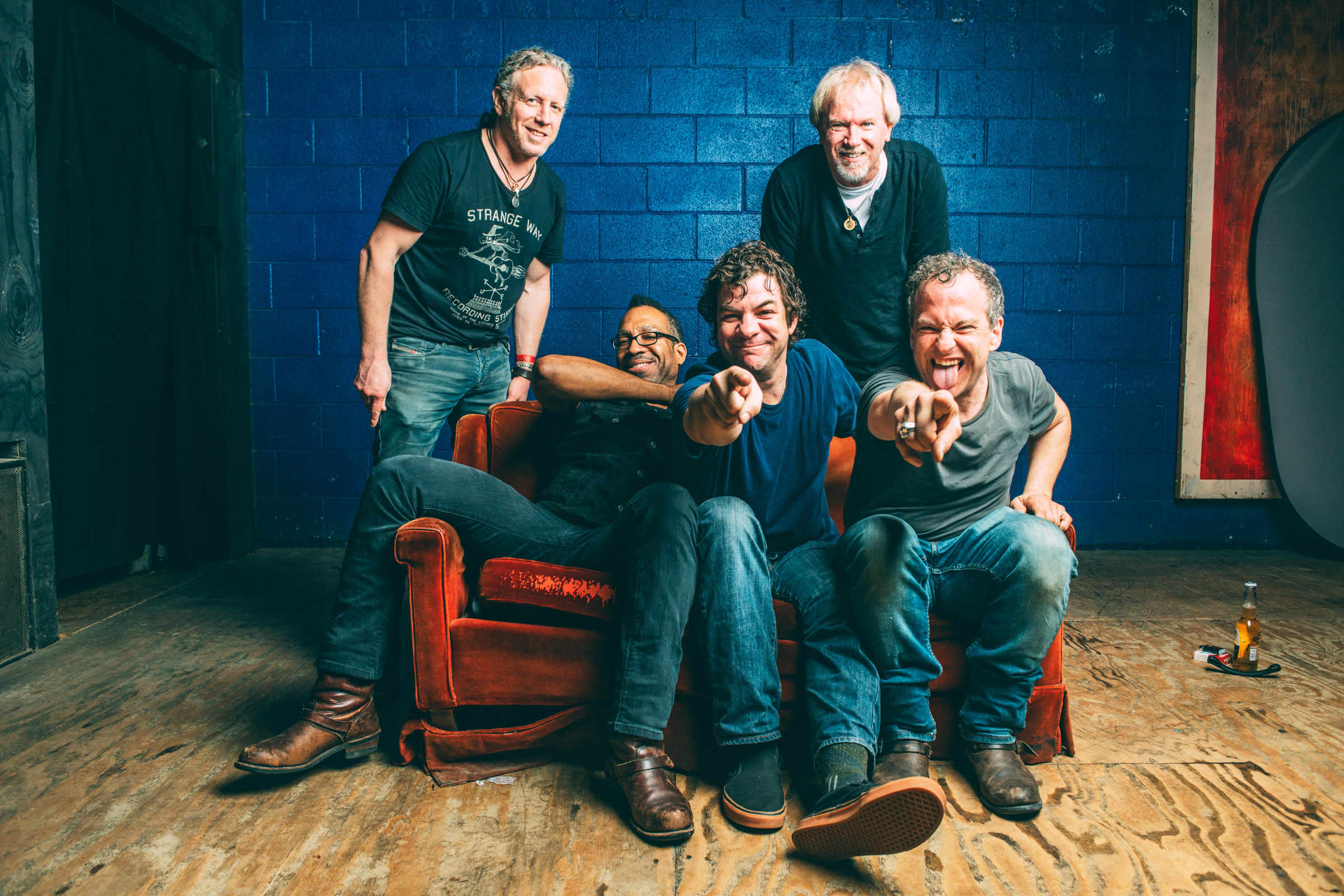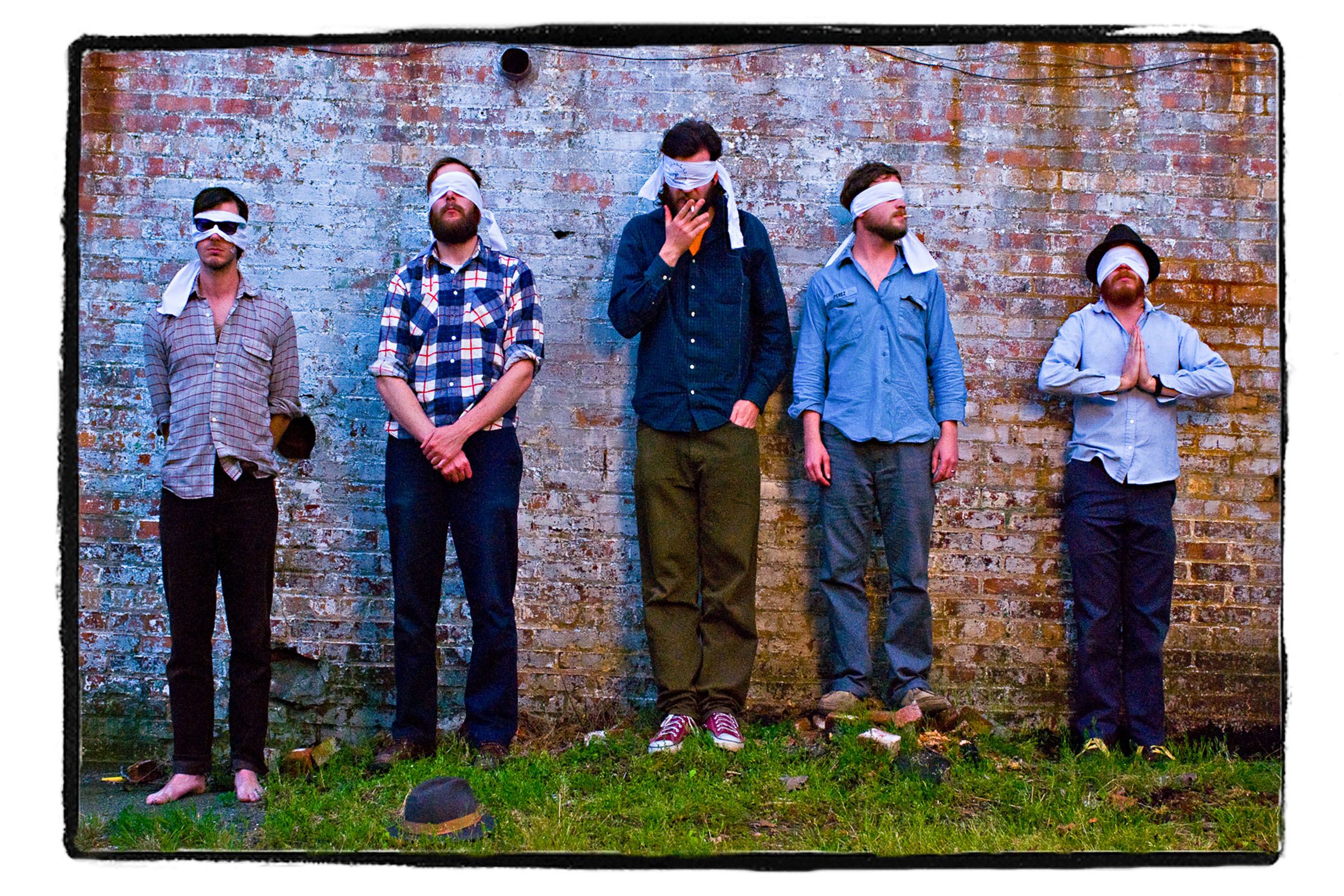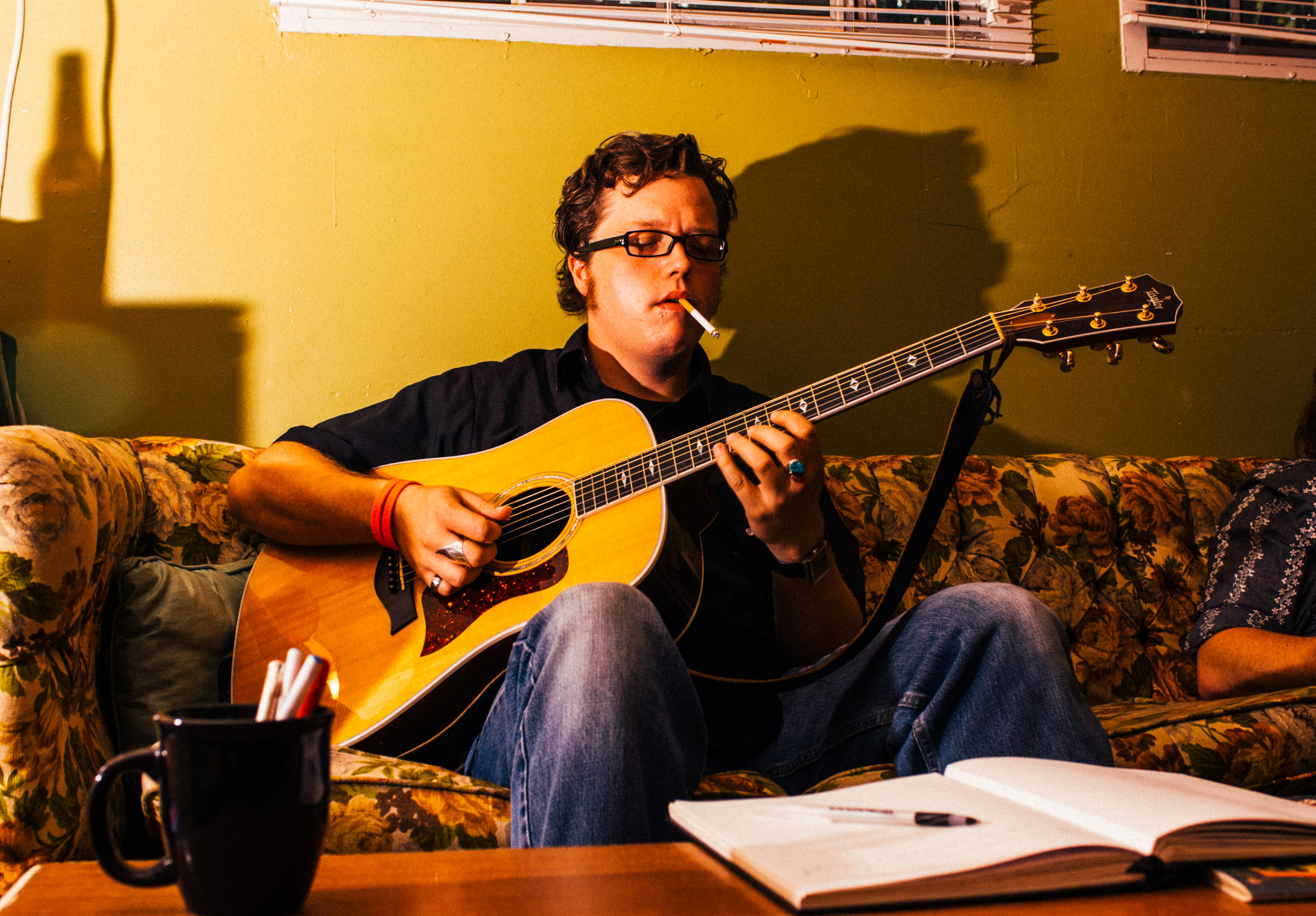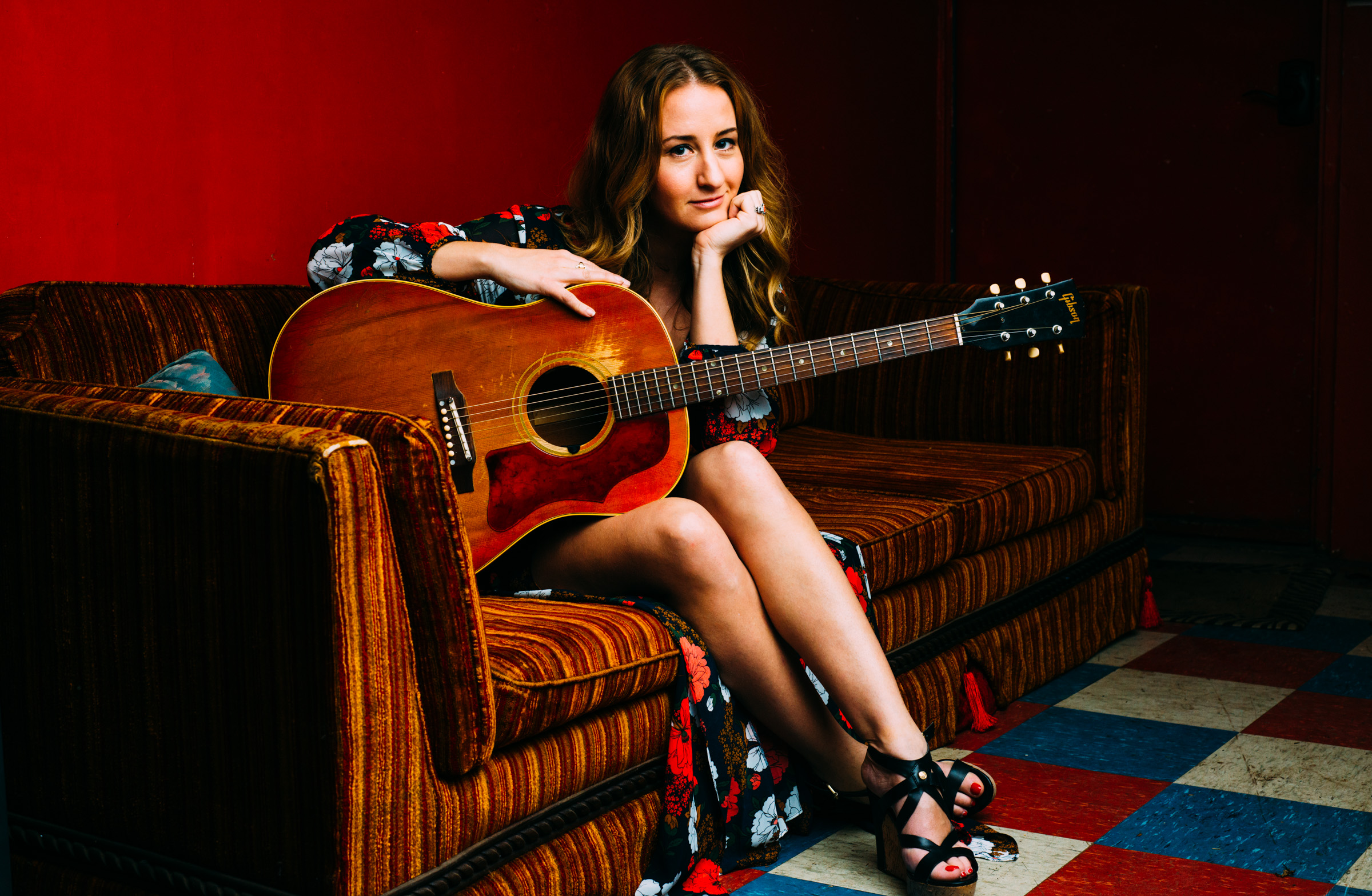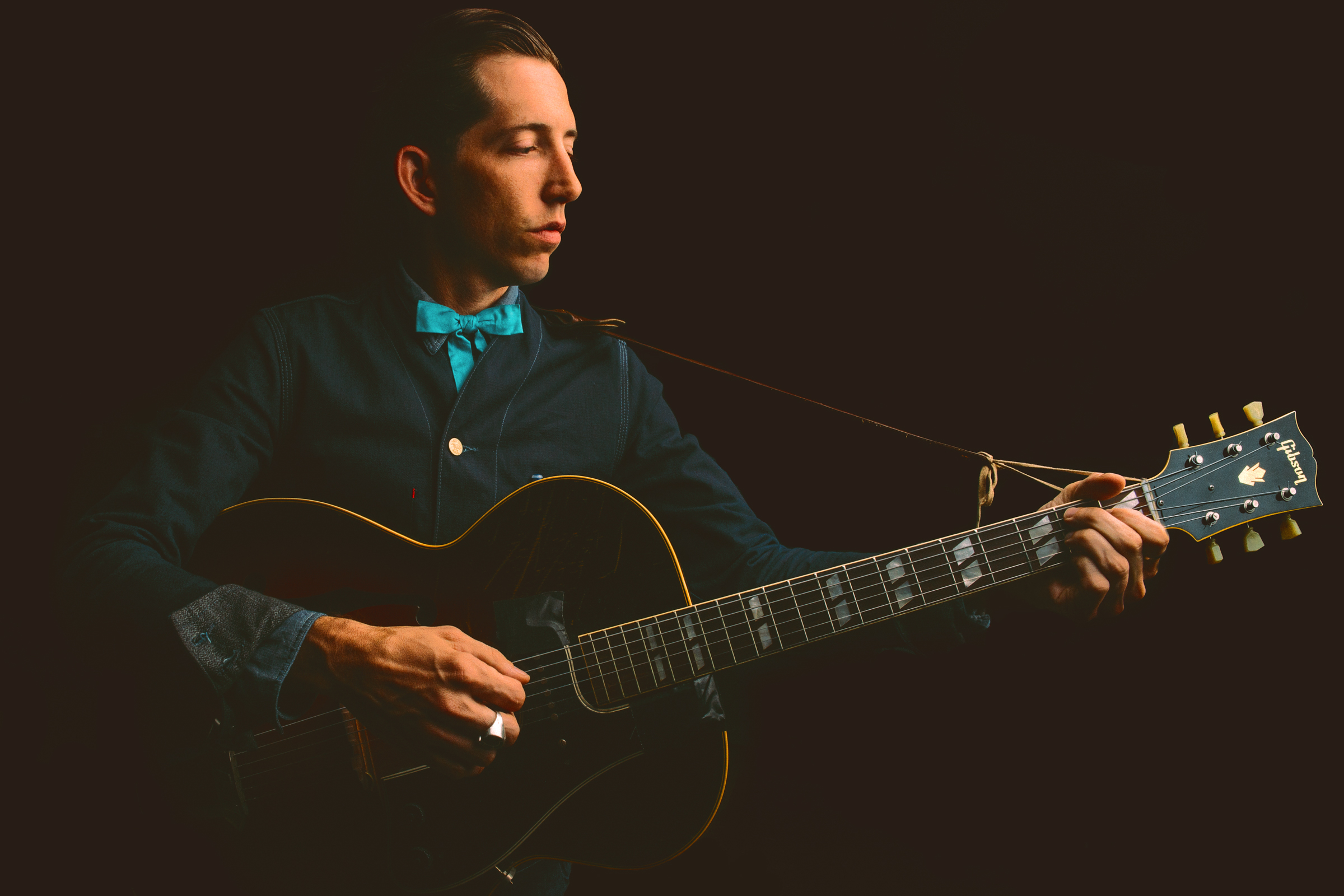Pouring and Shooting
/by Jay Moye
Sandlin Gaither was a bartender long before he was a photographer. In fact, he never owned a camera until 2004, when he took a job at the Grey Eagle Tavern and Music Hall in Asheville, North Carolina.
“I didn't grow up taking pictures,” Gaither, 40, says over a steaming cup of coffee. “I took a film class in high school using my mom’s old 35 millimeter camera and learned a little about the darkroom, but I didn't develop any kind of knack for it. There was no spark.”
The spark came at the end of one of his first shifts at the Grey Eagle. He chatted up a few members of fast-rising country group Sugarland as they huddled around the empty bar, sipping on post-show beers.
“Six months later, I’m flipping through the TV on a Sunday night and I come across a Bon Jovi concert,” Gaither says. “And who’s on stage singing with them? Sugarland. I realized I had to get a camera because you just never know who might come through, and as a bartender, I was in a unique position to capture some great stuff.”
He bought a $500 camera at Best Buy and took live shots, slipping away from behind the bar during the occasional lull and making a beeline for the stage, knowing he only had a few minutes. Rodney Crowell and Chris Thile were among his first subjects. With each show, he developed a sharper eye for composition.
“This was way before Instagram,” Gaither recalls. “There’d maybe be one other person in there with a point-and-shoot, and every now and then a guy with a real DSLR camera. I felt like I was capturing a piece of music history that needed to be recorded because no one else was.”
Over the last dozen or so years, Gaither has built a portfolio of over 400 images that have caught the eyes of musicians, fans and editors across the country. Rolling Stone, The New York Times, Paste, No Depression, Filter, and The Village Voice have published his photographs. Gaither’s forte has become portraits of musicians. He shoots at the Grey Eagle during the idle time between load-in and soundcheck, soundcheck and showtime, or before the band packs up and hits the road again.
Nothing is scheduled in advance — and it all still happens when Gaither isn’t serving drinks to Grey Eagle patrons.
“When the band gets here, I feel out who’s gonna be my go-to person,” Gaither says. “I then tell them I’m the guy who takes the photos you see on the wall, that I’ll send them a copy, and that it only takes a few minutes.” He has been turned down only a handful of times, he claims, including a gruff rejection from Will Oldham, aka Bonnie Prince Billy.
Most of Gaither’s shoots are completely unscripted, but sometimes he has a concept in mind, like the time he had the Philadelphia rock band Dr. Dog line up against the wall blindfolded as if facing a firing squad. Or when he staged a photo of an overzealous female fan dragging Nashville rocker Will Hoge into the women’s bathroom. Inspiration often strikes mid-shoot.
“It all depends on the artist and the day,” Gaither says.
His subjects are almost always good sports, though he does encounter the occasional grump. Some ham it up, like ’80s actor-turned-performer Corey Feldman, who summoned his angel-winged “band” for a twilight shoot, or Spin Doctors frontman Chris Barron, who requested multiple wardrobe and lighting changes to perfect a vision he had in his head.
The decision to pivot from performance shots to portraits came one evening in 2006 while prepping the bar a few hours before doors opened. The night’s headliner, Hoge, was sitting alone, spooning through a bowl of beans and rice (the Grey Eagle served Cajun food back then), looking weary after a long day’s drive.
“And it hit me,” Gaither remembers. “This is my picture. I’m the only person privy to this very real moment.”
Not wanting to intrude, he let Hoge eat in peace. But portraits quickly became his primary focus.
“I realized that when I was taking live shots, others were getting the same thing I was getting,” he explains. “I had the opportunity to do something else … something more.”
Around that same time, he was studying venerable music photographers like Danny Clinch, Annie Leibovitz and Jim Marshall for ideas and inspiration. Their portfolios, he noticed, included a mix of concert shots and intimate, documentary-style work that oozed personality and presence.
“I came to appreciate that a good photo is 100 percent made by the person in front of the camera,” Gaither says. “You’ve got to have some technical skill, sure, but it’s who’s in the photo that makes it.”
Since he’s paid to pour drinks, not take pictures, Gaither has to work fast. But dealing with touring musicians and crews requires flexibility and patience, so finding a window can be tough. He usually sets up a backdrop and a simple lighting rig in the music room but has staged pop-up shoots in every corner of the venue – from the green room to the walk-in beer cooler.
He even scaled the roof to take one of his best-known photos, of the late and beloved Athens, Georgia, songwriter Vic Chesnutt. In the image, which went viral after Chesnutt’s passing in 2009, the singer-songwriter looks up from his wheelchair at dusk, classical guitar propped in his lap. He’s surrounded by crisp, autumn-toned leaves blanketing the club’s brick patio.
“Vic signed it when he played the club once more before he died,” Gaither says.
Gaither never intended to do more than build a collection for himself and document the acts who grace the Grey Eagle stage. But as he honed his craft, he hung a few framed portraits for patrons to see. Now, the Grey Eagle’s barroom and main hallway are wallpapered with a genre-spanning gallery of everyone from Jason Isbell to Sonic Youth to Kurtis Blow.
Word of Gaither’s talent has spread far beyond the confines of the Grey Eagle. He regularly captures concerts at other Asheville venues like the Orange Peel, and documents groups like Band of Horses and the Steep Canyon Rangers both in the studio and on the road. Several artists have tapped him for publicity or album cover shoots.
Occasionally, he’s on the other end of a photo pitch.
“About two years ago, I’m at home having dinner with my family when all of a sudden my phone starts going off,” Gaither recalls. “Everybody from the Grey Eagle is texting me. And they're like, ‘Bob Pollard of Guided by Voices wants you to take his picture. He never lets anybody take his picture. But he needs you to do it now.’ So I rushed to the club to quickly shoot the band on a couch backstage minutes before their first song. They’ve used it on posters and in a bunch of places.”
On a Saturday in the fall, Joshua Hedley and his honky-tonk band were wrapping up their soundcheck at the Grey Eagle, fiddling around with a classic country tune for which Hedley struggles to remember the lyrics. As the final pedal steel note whines, Gaither approaches the heavily tattooed, big-bearded Third Man Records singer, who agrees to change out of his T-shirt and shorts and meet us around sunset on the patio, where everything’s set up and ready to go.
Moments later, Hedley arrives sporting a look he claims is “part substitute teacher, part private investigator” – tweed blazer, tie, fedora – and poses for a handful of shots, lit cigarette in hand. Gaither provides subtle direction over a clicking shutter. The whole process takes about six minutes.
“I never have much time, so I’m going for aesthetic over technical perfection,” Gaither explains. “I want to photograph artists with attitude and character, even if they’ve only sold four tickets that night. I’m hoping to capture what I call a spirited moment – someone in their true element.”
So come on you Asheville boys
Turn up your old-time noise
Kick till the dust comes up
From the cracks in the floor
-
Gillian Welch, “Hard Times”
The Grey Eagle was first located in Black Mountain, North Carolina, in what used to be the garage and paint shop of a Chevy dealership. In 1999, the club moved about a dozen miles west to Asheville. The unassuming cinder-block building within earshot of the French Broad River was previously home to a gritty pool hall whose proprietor, as rumor has it, once threw an unruly patron off a nearby bridge in the ’80s. Before that, it was home to a school bus repair shop. The final scenes of the 1958 film-noir classic Thunder Road were filmed nearby.
This history, and the inviting vibe Gaither and his coworkers create, make the 550-capacity club a preferred stop for musicians, many of whom pass up opportunities to play bigger rooms for the Grey Eagle’s homespun vibe and impeccable sound.
“There’s nothing pretentious about this place,” Gaither says. “We’re like a family. We take care of the artists that come through here. We put them at ease.”
This sense of comfort not only translates to special performances; it breeds remarkable photographs, too.
“As an artist, when you look at your schedule and see that you're coming from D.C., you're coming from Winston-Salem, North Carolina, or Columbia, South Carolina, you don’t really care,” Gaither says. “But when you see the Grey Eagle in Asheville pop up on the itinerary, you get excited. This is a special club in a special town. I don't think I’d be able to do what I’m doing anywhere else.”



